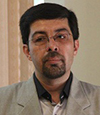Dear Editor,
The Alma-Ata Declaration, which was endorsed by the World Health Organization (WHO) and its member state, emerged as a major milestone of the twentieth century in the field of public health in 1978. The declaration marked a global recognition that health and access to primary health care (PHC) are fundamental human rights, and it identified PHC as the key to the attainment of the goal of “Health for All by the Year 2000” (1).
Primary health care is a collection of 11 first-level services, such as health education, vaccination, management of infectious diseases, mother and child care, water sanitation, dental health, etc. This is a simple and inexpensive service, but it is very useful and effective, and if presented to all people, it can significantly increase health level in the community (1).
In line with fulfilling the Alma-Ata vision, the Islamic Republic of Iran has showed remarkable achievements toward this goal (2). In 1981, a PHC development program was piloted in the Western Azerbaijan Province, which expanded to all other provinces in 1983. The plan emphasized on community participation and intersectoral cooperation in offering PHC services.
WHO in its World Report 2008 has stated that Iran is one of the successful examples of the implementation of PHC (3). The significant primary healthcare advances in Iran have taken place through a multi-tiered network of health centers, starting from health houses in rural areas and health posts in urban areas to health centers and district teaching hospitals. The Iranian public sector has provided PHC services to even its rural populations via health houses staffed with Rural Community Healthcare Workers (Behvarz). The wide range of PHC services in Iran has been complemented with impeccably recorded data. The universities of medical sciences, of which one exists in each province, play an important role in medical education and in the provision of health services.
The health status of Iranians has improved over the last 40 years. For instance, maternal and child mortality rates have fallen significantly. In Iran, the rate of pregnant women’s death has fallen from about 240 to 19 cases in every one hundred thousand pregnant women and neonatal death has declined from 180 to 9 in every thousand births (reference to this text: Ministry of Health website). Also, life expectancy at birth has risen remarkably to a regionally high level of 74 years.
Despite a proper and elaborated PHC system in place and its relative success in providing PHC services over the past three decades, Iran, however, has not been able to keep pace with the rapidly changing demographic developments. The major challenges the PHC system is facing in Iran include the epidemiological transition and the shift in the burden of diseases from communicable to non-communicable, aging population, and urbanization (4). Many cities face a triple threat: emerging and re-emerging infectious diseases which thrive in crowded areas, chronic, non-communicable diseases including diabetes, cancers and heart diseases which are on the rise with unhealthy lifestyles including tobacco use, unhealthy diets, physical inactivity and harmful use of alcohol, and road traffic accidents, injuries, violence and crimes. Migration of people from rural to urban areas has resulted in a rapid increase in informal settlements in outskirts of cities, and in turn, marginalization and the creation of slums in which people do not have equal access to health care (4).
From May 2014, the new reforms of the health system in Iran have been launched as one of the priorities of the new government with the aim of accomplishing the health system’s goals, including the stewardship, financing, financial protection and improvement of health services. To address these challenges, the Ministry of Health in 2014 adopted a law; Health Transformation plan (HTP), which covers all areas of the health system including: health, treatment, drugs and education (5).
In the field of health and first-level services, modern health services (modern PHC), which include basic preventive measures to reduce risk factors and mortality from non-communicable diseases, have been mandated by service packages for different age groups including: infants, children, teenagers, youth, middle-aged individuals, elderlies, and pregnant women. These services should be provided free of charge to all rural and urban residents (6).
In rural areas, rural insurance program has been implemented since 2005. Thus, after HTP, infrastructures (i.e., health houses, rural health centers and equipment) and human resources (i.e., health team) were fully developed to provide new services (7). Besides, for the first time, in marginalized areas and cities, the infrastructure (i.e., health posts, urban health centers and equipment) was completed to provide new services. For this purpose, health experts and midwives as health providers were recruited for every 2,500 people to begin providing active new services to all individuals by recognizing their populations. In order to implement this plan, the digital platform called “SIB”, was designed to record all services provided to people on the computer system (8).
In short, PHC has been developed as one of the most important tools for reaching Universal Health Coverage (UHC) and Health for All (HFA). Accordingly, the healthcare reform plan in Iran, using modern health services (modern PHC), aims to reach the goal of UHC in all urban and rural areas within a medium-term period. Over the past three years, the implementation of this project has been sweeping across the country, and the coverage of first-level services has expanded in all urban and rural areas. So far, about 97% of the country's population has been enrolled in the scheme, and at least one service level has been provided to 70% of the population. Meanwhile, the control of risk factors for non-communicable diseases among middle-aged and elderly individuals is currently underway (9-11). These measures collectively should reduce the number of deaths due to cardiovascular diseases by one third by 2030. A goal that has been committed to the objectives of sustainable development in Iran (12).
